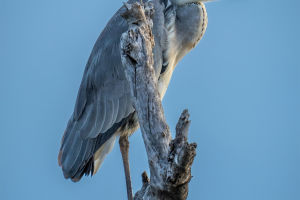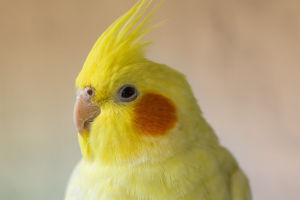A neck over 2 meters long constitutes the most prominent feature of giraffes and makes them the tallest animals on earth today.
So, how did this unique neck come to be? The research team has uncovered completely new evidence of giraffe neck evolution from a peculiar giraffe ancestor. The study points to male courtship competition as an important driver of giraffe neck evolution.
The most famous debate on this issue came from Lamarck and Darwin. Lamarck proposed the hypotheses of "use in and out" and "acquired inheritance".
According to the former, giraffes feeding on the top leaves of trees need to use their necks constantly, so their necks become longer. According to the latter, these new traits could be passed on to offspring, making the long neck a universal trait.
Darwin countered, based on adaptive evolution, that the giraffe's long neck was the result of natural selection.
In the woodlands of the African savannah, giraffes with longer necks were able to feed on the top leaves of trees and therefore had a greater advantage in competition for survival, and such traits were more likely to be inherited.
Darwin provided a complete explanation for the origin of the long neck, but the issue was not settled. Since then, other ideas have been put forward by scientists: the long neck is a weapon in the courtship competition of male giraffes, helping to fight for mating rights.
According to this hypothesis, male giraffes use their bony-horned skulls to smash heavily into the weak part of their rivals' necks during courtship competitions.
In this process, the swing of the long neck is like the chain of a meteor hammer, which allows the head impact to have more kinetic energy. Simply put, the longer the neck, the greater the damage done to the opponent.
Although the hypothesis of courtship competition is interesting, testing it becomes a great challenge. In the latest paper, the team found key clues from an early giraffe species.
The researchers' team studied a curious species found for the first time: Discokeryx xiezhi.
D. Xiezhi belongs to the same general family of giraffes as the present-day giraffes.
This fossil was unearthed at the northern edge of the Junggar Basin in Xinjiang and lived about 17 million years ago. The well-preserved skull and four cervical vertebrae allowed scientists to study the origin of this trait with the help of comparative anatomy of the skeleton.
The Xiezhi possesses a unique set of features, particularly the disc-shaped bony horn in the middle of the head as if it were a helmet growing on the head. The cervical vertebrae of this species are very stout and have the most complex joint connections between the head and neck of any mammal.
The team's study of the fossilized bones suggests that this complex joint was particularly well-suited for high-speed impacts, even more so than in animals that require frequent head impacts today, such as musk oxen. Combining bone angles and joint features, the authors concluded that D. Xiezhi may have been the best-suited vertebrate for head impacts in history.
What accounts for the intense competition in this species? The team found that the environment played a key role.
Seventeen million years ago, when D. Xiezhi lived, the Earth was very warm, so forests were overall very dense. But the Tibetan Plateau was already rising, blocking the transport of water vapor from the Indian Ocean to the north, so D. Xiezhi was located in a drier region.
This is also confirmed by isotope studies. Stable isotopes can help us infer the type of food the animal had at that time. Isotopic analysis of D. Xiezhi tooth enamel shows that they lived in open grasslands.
The grasslands were more barren than the forest environment, where food was plentiful, so D. Xiezhi faced greater survival pressure. This may explain their intense courtship competition.
This study shows us that early giraffe evolution was likely more complex than previously thought: courtship competition played an important role in shaping long necks.
Which was the main driver of giraffe neck evolution, competition for food or courtship? Will Darwin's explanation still hold up this time? We look forward to the day when the answer is finally revealed.


